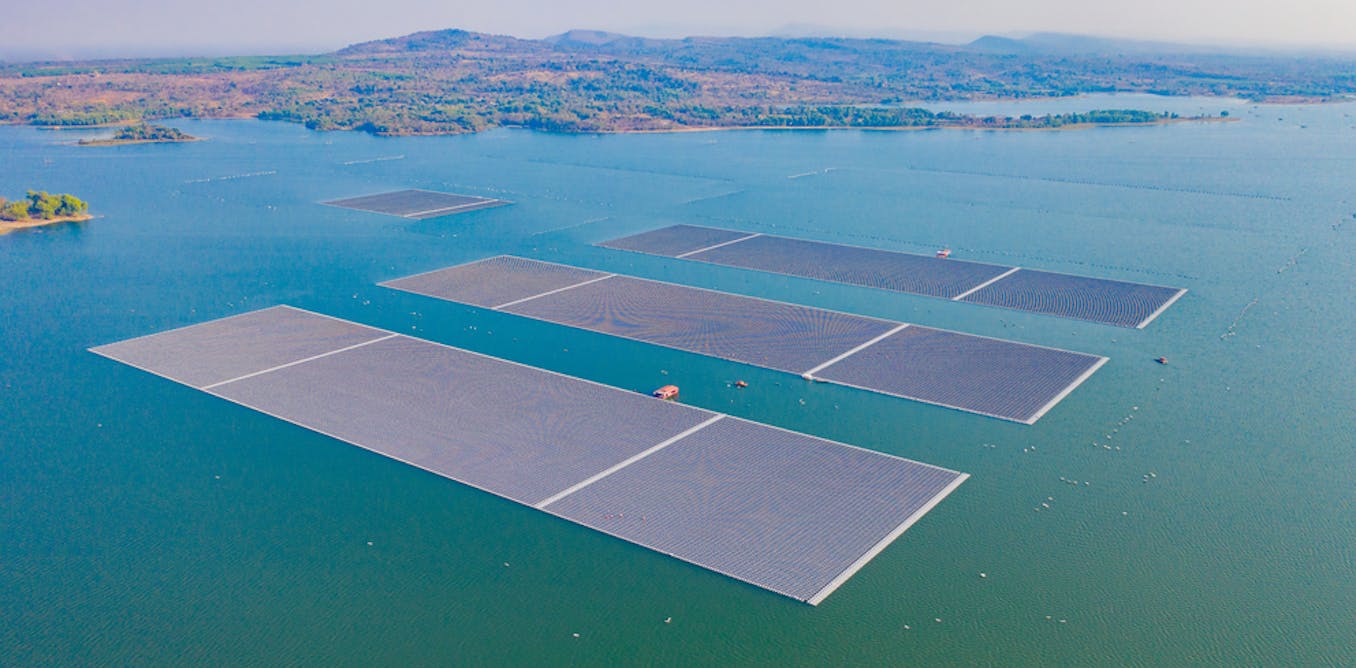‘Limitless’ energy: how floating solar panels near the equator could power future population hotspots::New research shows densely populated countries in Southeast Asia and West Africa could harvest effectively unlimited energy from solar panels floating on calm tropical seas near the equator.
Just… Freaking… Deploy nuclear plants! We have the tech, we know they work, their footprint is small. Why the frack do we feel the need to chase these ridiculous zany ideas that face obvious fundamental engineering flaws, like, oh I don’t know, STORMS and corrosion??? Maintaining these would be a bloody nightmare.
It’s not either/or. We need to roll out everything we can, including solar and nuclear, as well as carbon removal tech.
That’s interesting you say that because building nuclear plants is also a “bloody nightmare”, see Vogtle, Hinkley Point, Flamanville, etc
They have been dumb, that’s for sure. However, a large part of the reason they were dumb is because of the regulatory process being, well … stupid. Not engineered well for actually executing projects. Don’t get me wrong, we absolutely need regulatory oversight, but it can be done in a more thoughtful way than it is currently.
These floating solar panels though, strike me as a general engineering nightmare.
Nuclear power plants have a massive footprint. For example in Australia they’re planning to setup a new nuclear waste disposal facility with a forecast budget of half a trillion US Dollars and it will be full in 70 years time - they’ll have to build a new one somewhere else after that.
That nuclear waste site will be radioactive for millions of years. The land will never be able to be used for basically anything, ever.
If you covered just that nuclear waste facility with solar panels, it would provide a massive amount of power. Enough to cover the day time power needs of a small country.
Solar panels aren’t a “zany” idea. In fact one of the reasons it’s being explored is because it would reduce evaporation. Power generation is often almost an afterthought. The panels also don’t have to be ugly - in fact there are prototypes that are invisible. They just look like ordinary glass, and don’t cost much more than glass either.
Half a trillion dollars over seventy years is nothing. How large is the waste site compared to the habitable surface? A few square kilometers is nothing.
The power needs of a small country is also essentially nothing over a seventy year span.
Nuclear energy is not ideal but it beats the hell out of coal plants, and it gives us a bridge to something sustainable. Solar has its own drawbacks and no nation is going to maintain a bunch of floating panels out in the ocean.
If nuclear was in any way comparable in terms of cost to renewables + storage you might have a point, but it isn’t, so you don’t.
In fact, hot take: Why don’t we deploy a solar power belt around the equator… AND nuclear power wherever we can put it? And while at it, let’s make reprocessing of nuclear waste a must-do. It gives you more kWh/kg uranium, and the inevitable waste you do end up having is a cup instead of a cask, and far less dangerous for far shorter.
This happens to solve another problem though, which is that decreasing cloud coverage in the Pacific is leading to increasing surface water temperatures
It’s certainly promising, though the main problem is maintenance. Floating panels are obviously harder to fix than land-based ones, and seawater corrosion tends to be a big problem for any kind of long term infrastructure. Several countries are doing small scale trials to see how well the technology works in practice, before any kind of big rollout.
If they’d spend time researching ways to prevent any kind of corrosion in the first place we wouldn’t need as much maintenance. As for cleaning them hell just have them submerge themselves 1 time a day or week or whatever and come back up. Or research ways to make it 100% hydrophobic and…dustphobic? Is that a word? Lol. That would allow for even less maintenance.
Unfortunately that style of research takes tons of time and tests and here’s the big one that ruins it all in the first place : money. Money is what will make all of what i just said not happen in the first place. People would rather slap some cheap shit down instead of paying a larger sum 1 time and be done with it.
Of course this assumes those waters stay calm. Given how fast ocean and atmospheric currents are changing that does not seem like a safe assumption. Hurricanes are not likely to move into the region but that’s not the only weather that can wreck big plates of brittle silicon.
The same can be said about pretty much every infrastructure project on the planet though. Earthquakes, cyclones, hurricanes, tornados, floods, droughts, etc can all take down power grids of all types.
They all need maintenance, and the benefit of solar is that you can spend more on maintenance because you dont have to pay for incoming energy for processing.
No project is flawless, but maintain a grid of anodes and shooing away birds has definite benefits over digging up coal or uranium, or pumping oil and gas all over the place.
We cant let perfect be the enemy of good.
Anytime one of these big projects has something offshore, I have to wonder whether it wouldn’t be more likely to be adopted if it were on land instead, if possible. Everything. EVERYTHING is more expensive when you’re putting it in the middle of miles of salt water.
If these are too big then presumably it’ll block sunlight from that patch - that not a bad thing? I assume you’d need a lot for it to have an effect and the sea is pretty big…
Most of the sea in those region is pretty barren with mud/sand sea floor. As long as they don’t put it above a coral reef I imagine the ecological impact would be small. Might even have a positive impact because it might provide shelter for young fish in an otherwise barren patch of sea.
I was wondering the same thing. Just considering algae, it absorbs a large portion of the world’s CO2. But the ocean is massive and a relatively tiny covered patch wouldn’t dent it much.
Add the fact that the solar panels would negate some of the need to burn fossil fuels, I think the outcome is more than net positive.
As far as any negative impact on wildlife and the biosphere, I’m sure it’s negative, but I don’t know much about it.
This is fucking stupid imo. We have more than enough land area for solar as it is. Why would you add 100x the complexity to your solar plant when you can just build it on land? Now you have to deal with tides, salt water corrosion, your technicians have to be scuba divers or something, running transmission lines through salt water is much harder than the ground. What happens when there’s an electrical fault that kills a bunch of people because they’re submerged in highly conductive salt water?
If you had read even the first sentence of the article, you might’ve learned that just maybe they have a reason to not use land.
Not enough land.
Not every place is like central Africa or Ohio. Basically all coastal regions near the equator (which are the only places they are recommending this) are densely populated. To get the amount of solar panels they suggest, you would have to go far inland (if there is any inland) and have many more much smaller solar plants, and that’s more maintenance than single giant solar field, though as you’ve said, I’m sure on the sea comes with it’s own maintenance problems.
The article also talks about waves, wind and other environmental affects, and shows all the places where the “defences” against the environment wouldn’t have to be strong or expensive.
They most definitely don’t suggest that this be used everywhere. The main example they talked about is Indonesia. Extremely densely populated with little suitable land for solar plants.
TLDR: In most places this is stupid… but they never suggested that. There are certain places where it is viable and possibly the only option for large solar farms.
Removed by mod







